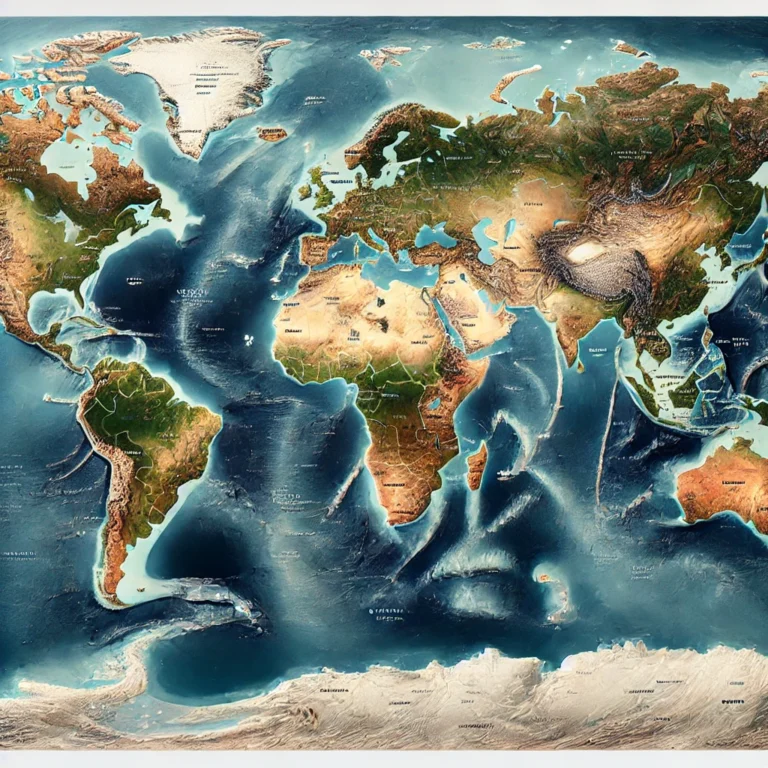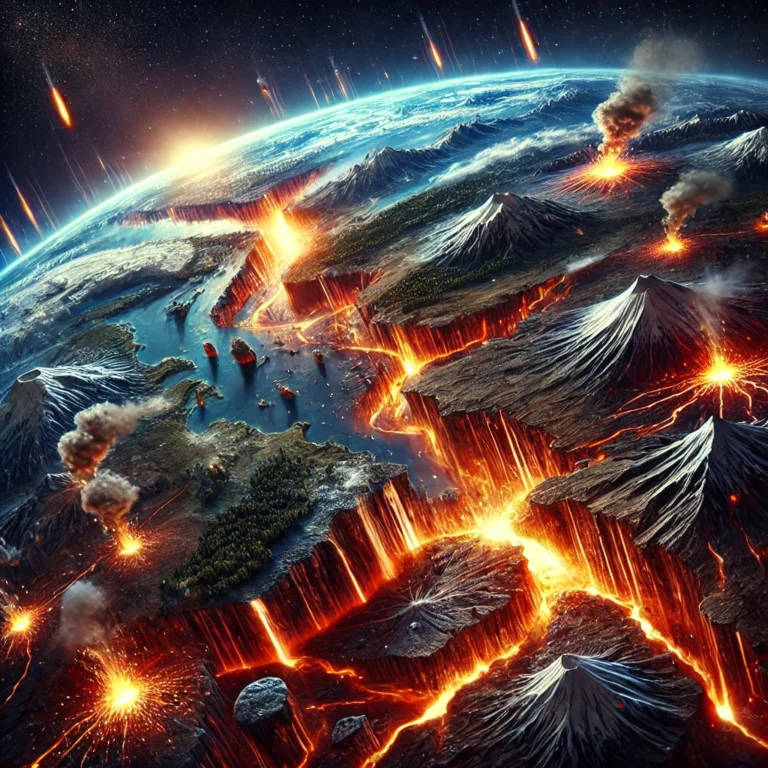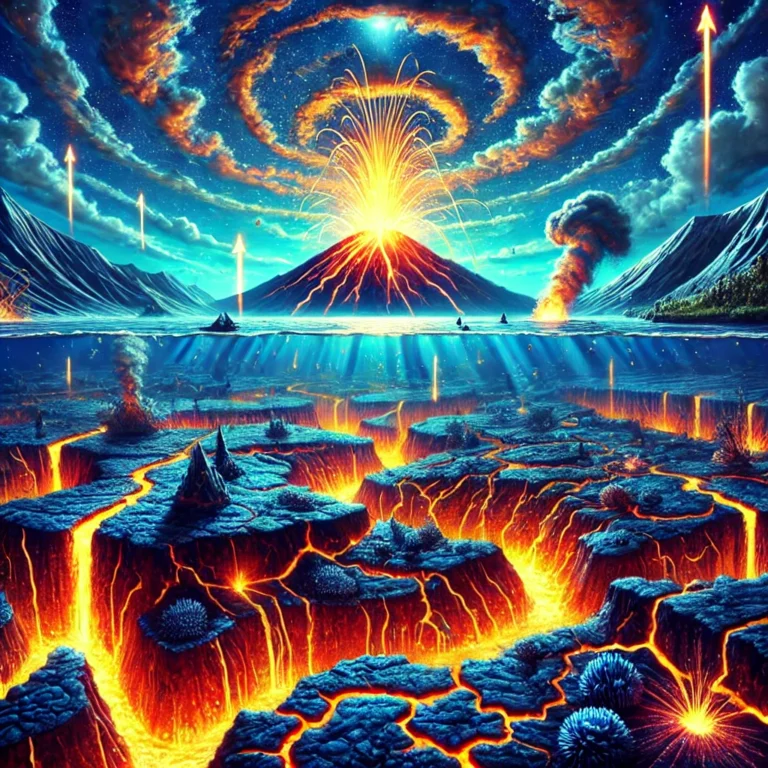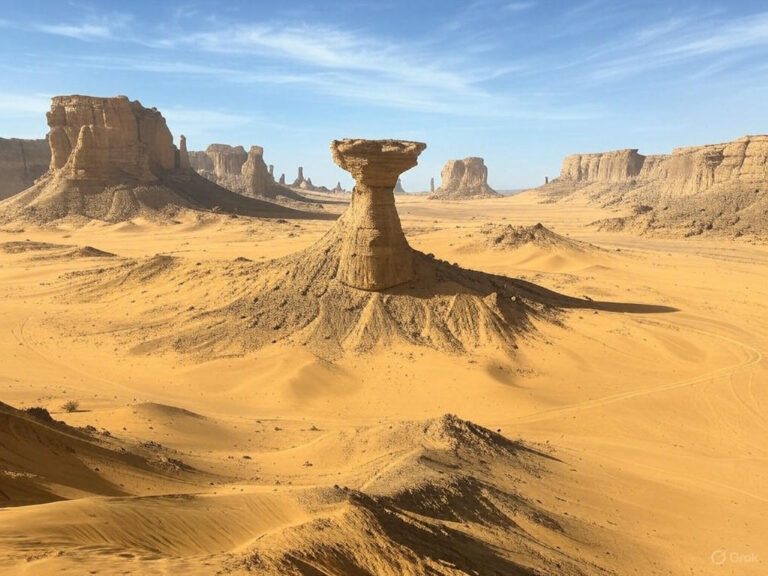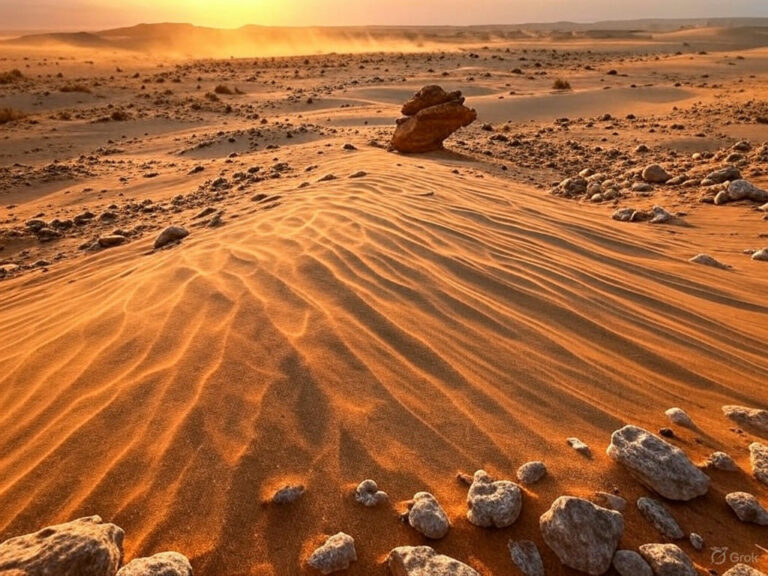Deserts of Asia – Barren Lands That Speak Volumes
Deserts are often misunderstood as lifeless wastelands. But in geography, deserts are powerful indicators of climate, tectonics, resource potential, and even ancient trade routes. In Asia, deserts span across different climatic zones and geological settings—from the scorching Arabian heat to the icy Gobi plains.

Let us understand the major Asian deserts, one by one.
1️⃣ Arabian Desert – The Desert of Oil and Oases
- 📍 Location: Most of Saudi Arabia, parts of Yemen, Oman, UAE, Qatar, Jordan, Iraq, Egypt
- 🏜️ Major sand bodies: Rub’ al-Khali (Empty Quarter) – world’s largest continuous sand desert; Al-Nafud
- 🏞️ Western side – ancient rocks of Arabian shield (Precambrian gneiss); Eastern side – sedimentary rock layers with oil reserves
- 🐪 Fauna: Locusts, scorpions, gazelles, ibex
- 🌴 Oases support farming: Dates, wheat, barley, melons
🧠 Significance: Rich in petroleum, hosts major oases, and holds strategic importance for West Asia’s climate and economy.
2️⃣ Gobi Desert – The Cold Desert of Central Asia
- 📍 Location: Southern Mongolia and northwestern China
- 🔹 Only ~5% is sand; most of it is bare rock and gravel
- 🏔️ Surrounded by Altai Mountains; 5 eco-regions including Mongolian Gobi and Alxa Plateau
- 🌡️ Continental climate – cold winters (below -20°C), hot summers
- 🐾 Fauna: Camels, gazelles, rodents, Gobi brown bear, snow leopards
🧠 Significance: One of the largest cold deserts on Earth with high ecological and palaeoclimatic importance.

3️⃣ Thar Desert – The Great Indian Desert
- 📍 Location: Covers parts of Rajasthan (India), Punjab & Sindh (Pakistan)
- 🧱 Geology: Ancient metamorphic rocks, covered by wind-blown sand accumulated over 1.8 million years
- 🧂 Features: Saline lakes (dhand), sand dunes
- 🌿 Vegetation: Scrubs, khejri trees, acacia; herbaceous plants
- 🐃 Fauna: Blackbucks, chinkara, partridges, Great Indian Bustard (critically endangered)
🧠 Significance: Supports a unique desert ecosystem and one of the densely populated arid zones in the world.
4️⃣ Taklamakan Desert – The Desert of Death
- 📍 Location: Central Tarim Basin, Xinjiang, western China
- ⛰️ Enclosed by: Tien Shan (N), Kunlun (S), Pamirs (W)
- 🌬️ Thick cover of wind-borne sand; some dunes are up to 1,000 feet high
- 🔁 Endorheic basin: All runoff from surrounding mountains stays within, supporting internal drainage
- 🐁 Fauna: Rabbits, field mice, jerboas
🧠 Significance: Surrounded by ancient Silk Road routes; a classic example of rain shadow desert due to high mountains.
5️⃣ Syrian Desert – Desert of Lava and Nomads
- 📍 Location: Covers northern Saudi Arabia, eastern Jordan, southern Syria, western Iraq
- 🌋 Features lava fields (called “harrat”)
- 🌧️ Very low rainfall (~125 mm annually)
- 🌾 Nomadic tribes and Arabian horse breeders inhabit the southern Al-Ḥammād region
🧠 Significance: Acts as a natural barrier between the Levant and Mesopotamia; critical for understanding human migration and Bedouin culture.
6️⃣ Karakum Desert – The Desert of Salt and Sand
- 📍 Location: Covers ~70% of Turkmenistan
- 🔹 Divisions:
- Trans-Unguz Karakum (north, elevated)
- Central Karakum (low-lying)
- Southeastern Karakum (salt marshes)
- 🌊 Features Unguz chain of saline hollows, formed by wind
- 🌿 Vegetation: Grasses, bushes, trees adapted to saline and dry conditions
🧠 Significance: Important for desert agriculture, home to the Karakum Canal, and rich in hydrocarbons.
📊 Summary Table of Major Asian Deserts
| Desert | Countries Involved | Key Features/Notes |
| Arabian | Saudi Arabia, Jordan, Iraq, etc. | Rub’ al-Khali, oil reserves, oasis farming |
| Gobi | Mongolia, China | Cold desert, bare rock, snow leopards, Altai Mountains nearby |
| Thar | India, Pakistan | Sand dunes, blackbuck, Great Indian Bustard, saline dhands |
| Taklamakan | China (Xinjiang) | Endorheic basin, wind-blown sand, high mountain enclosure |
| Syrian | Iraq, Syria, Jordan, Saudi Arabia | Lava fields, nomadic tribes, barrier between Mesopotamia-Levant |
| Karakum | Turkmenistan | Saline hollows, sparse vegetation, Karakum Canal |
🧭 Takeaway:
Deserts are not just empty lands—they are repositories of geological history, reflections of climate, and often witnesses of ancient human civilizations. They challenge life yet nurture resilience, both in nature and in humans.


